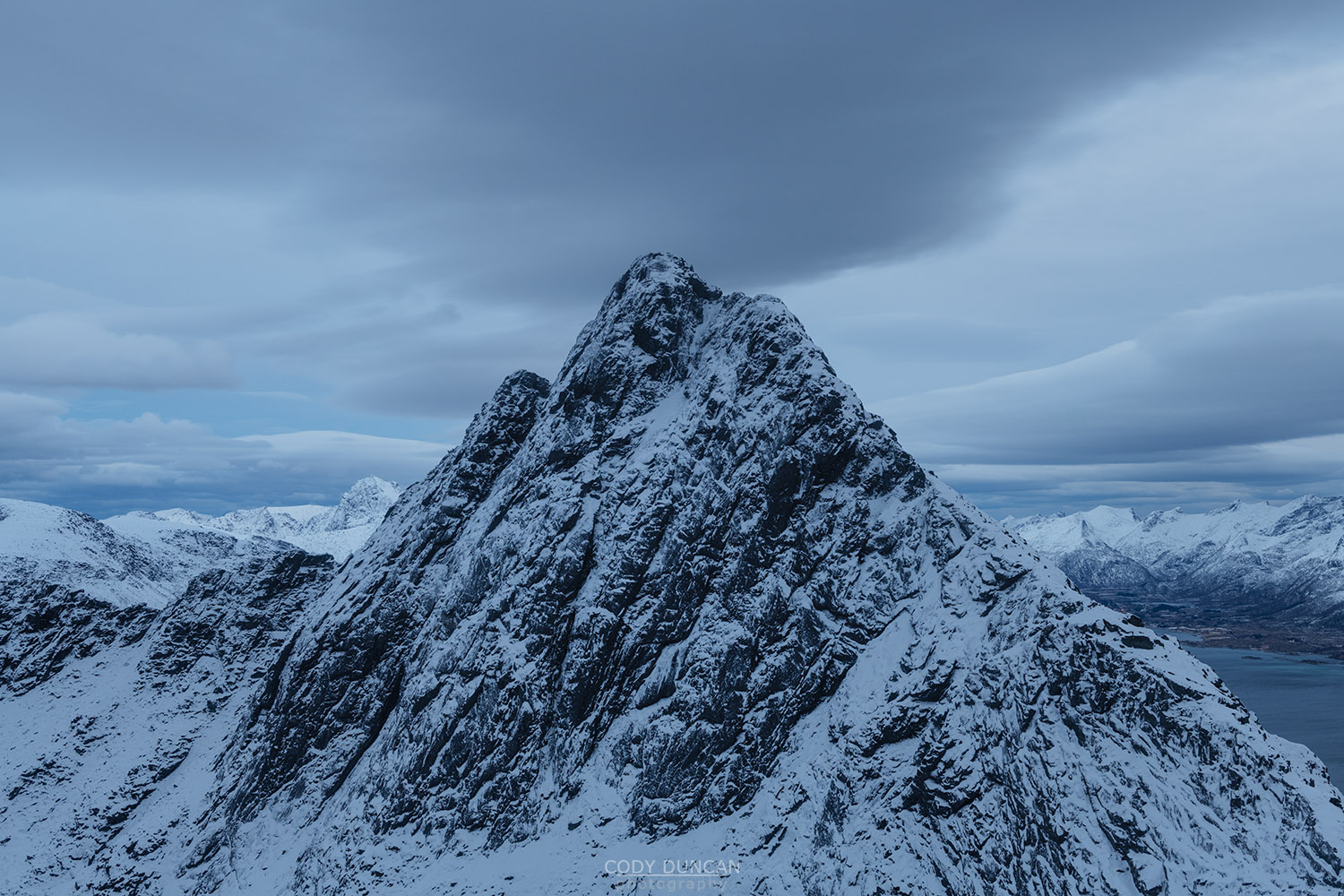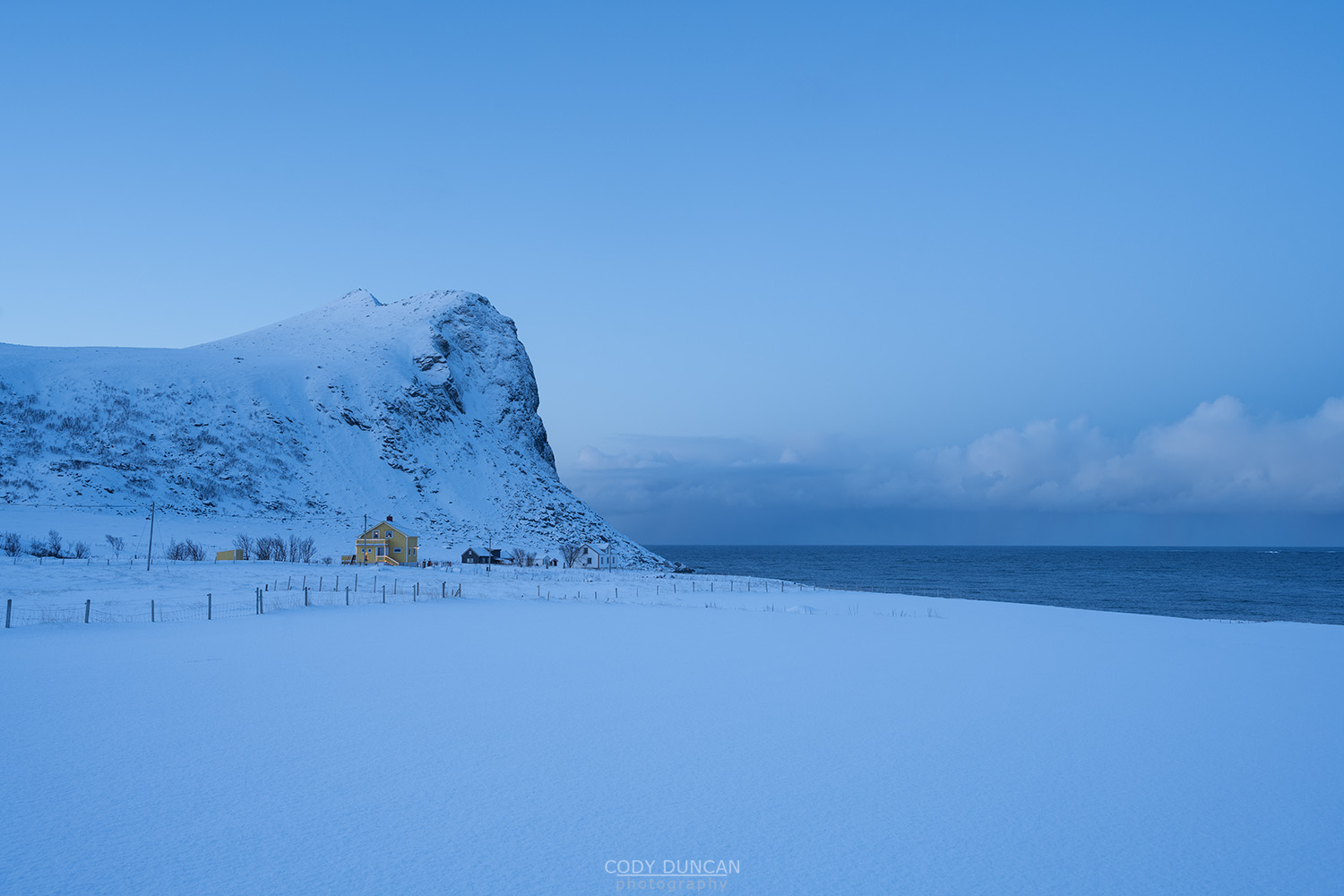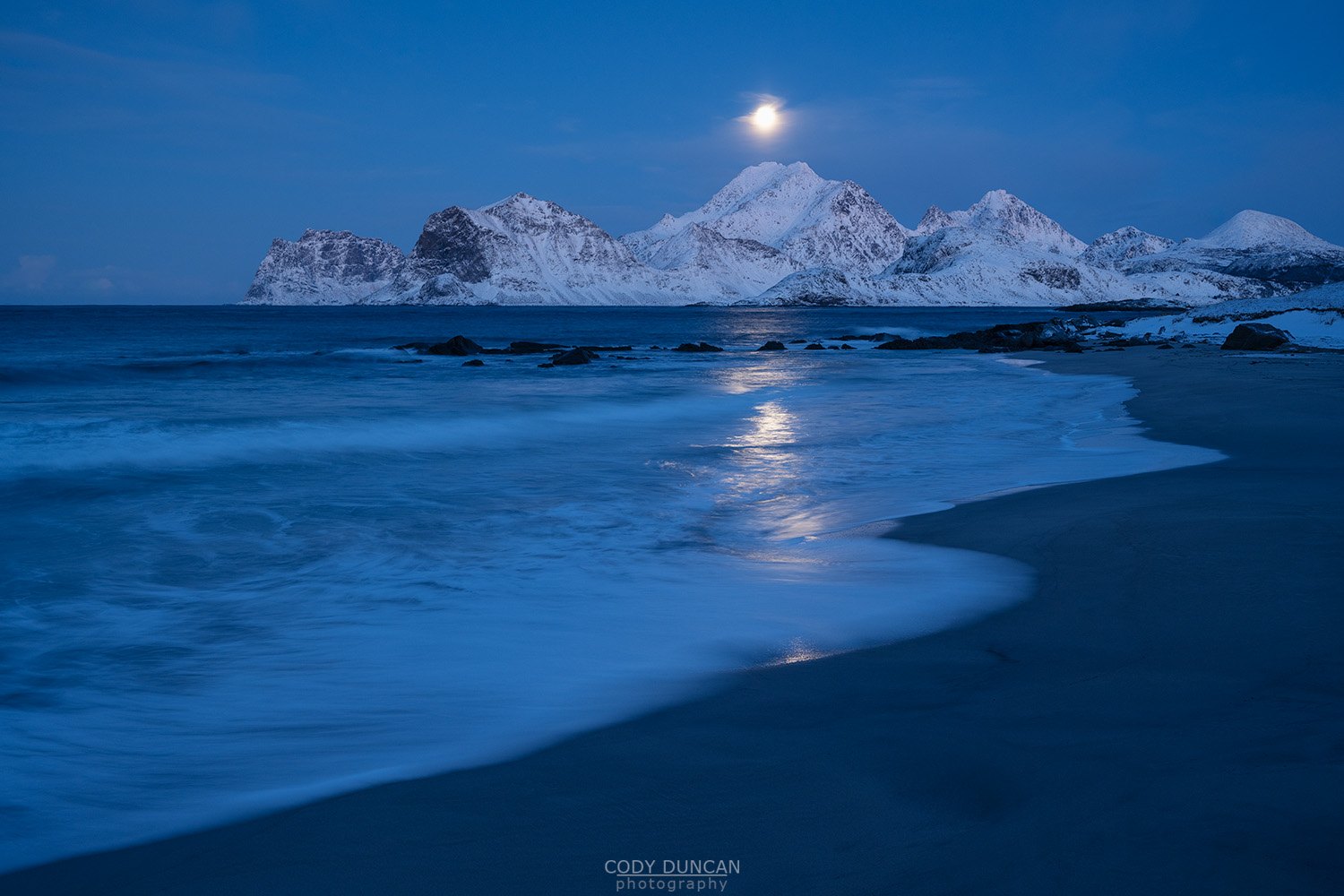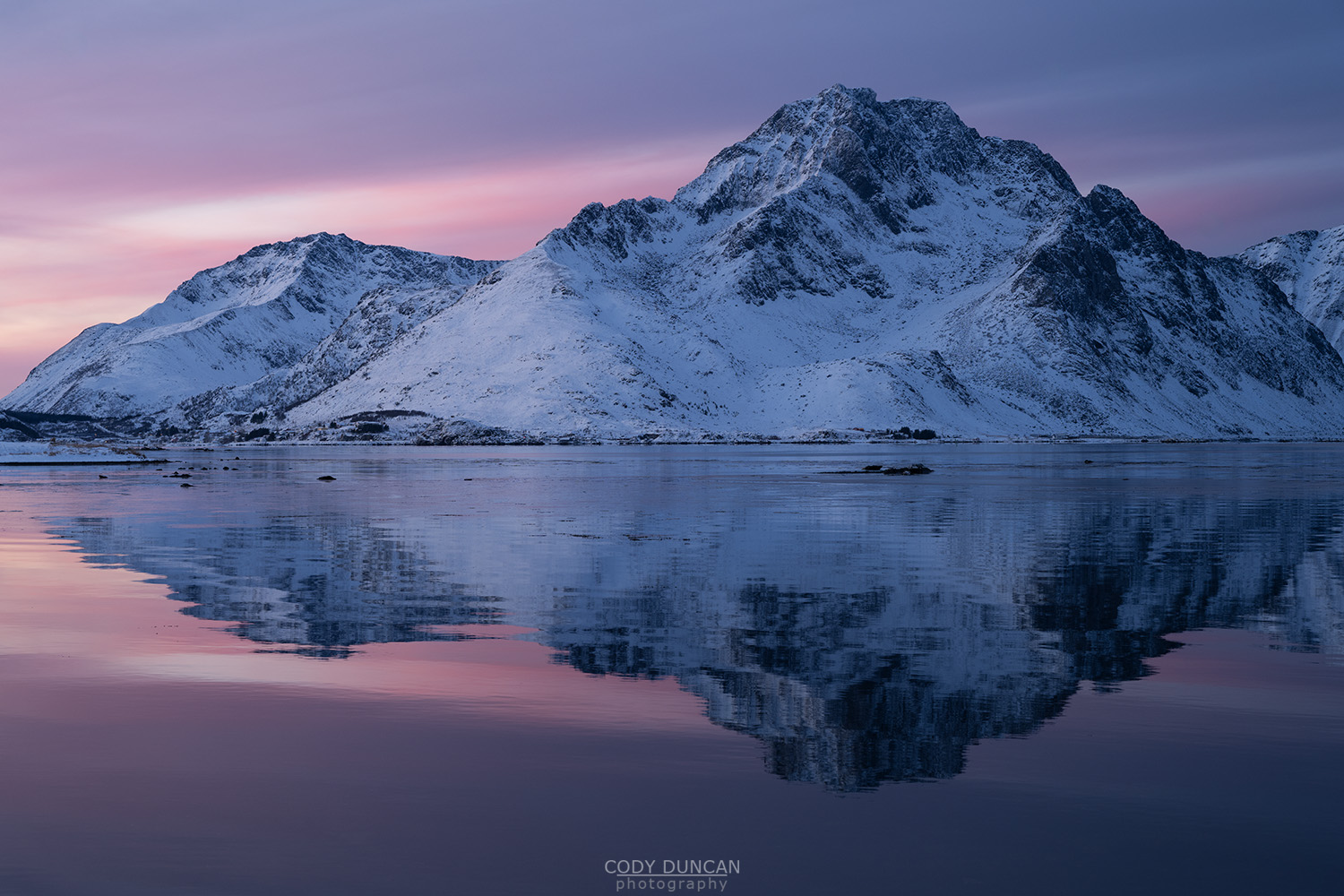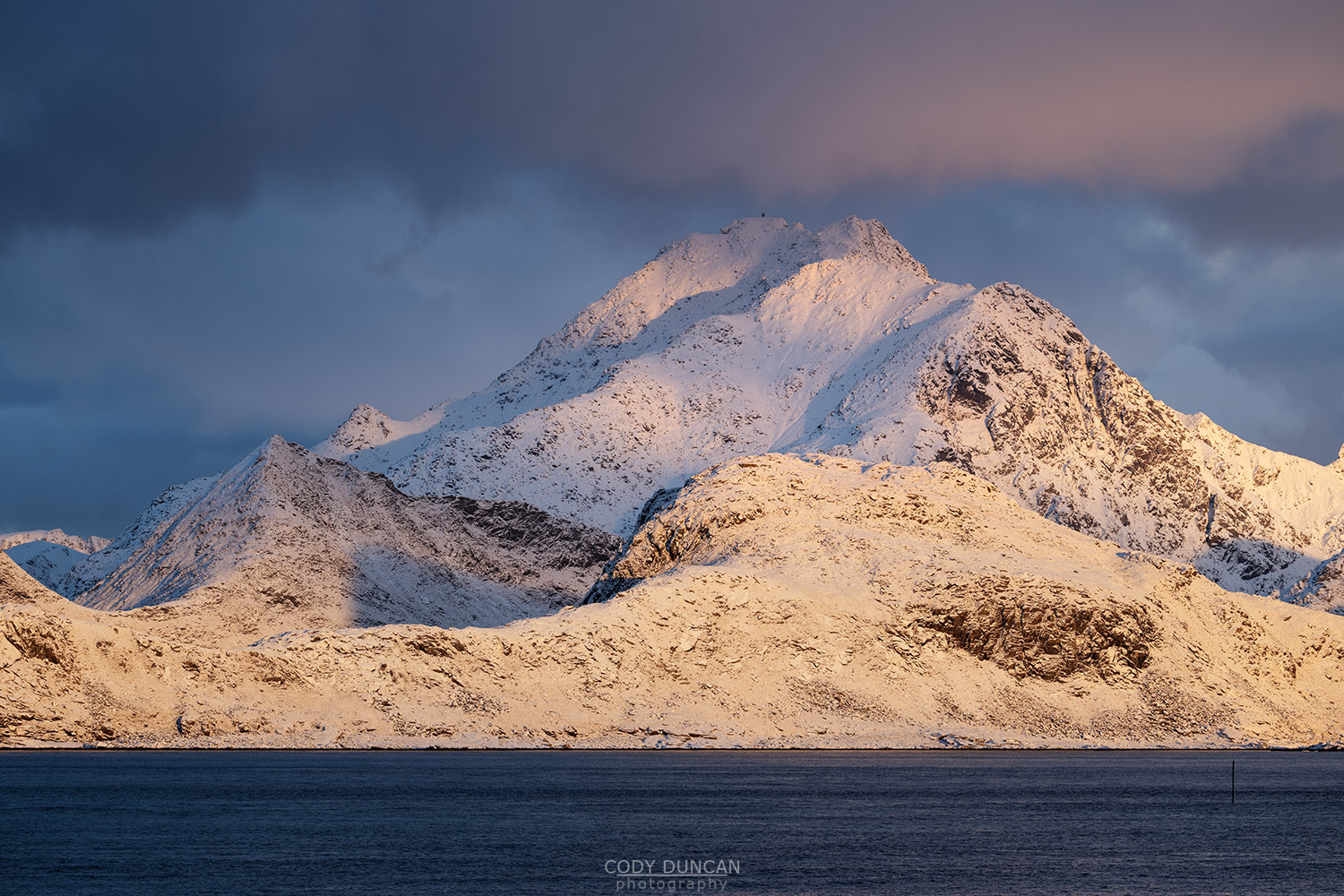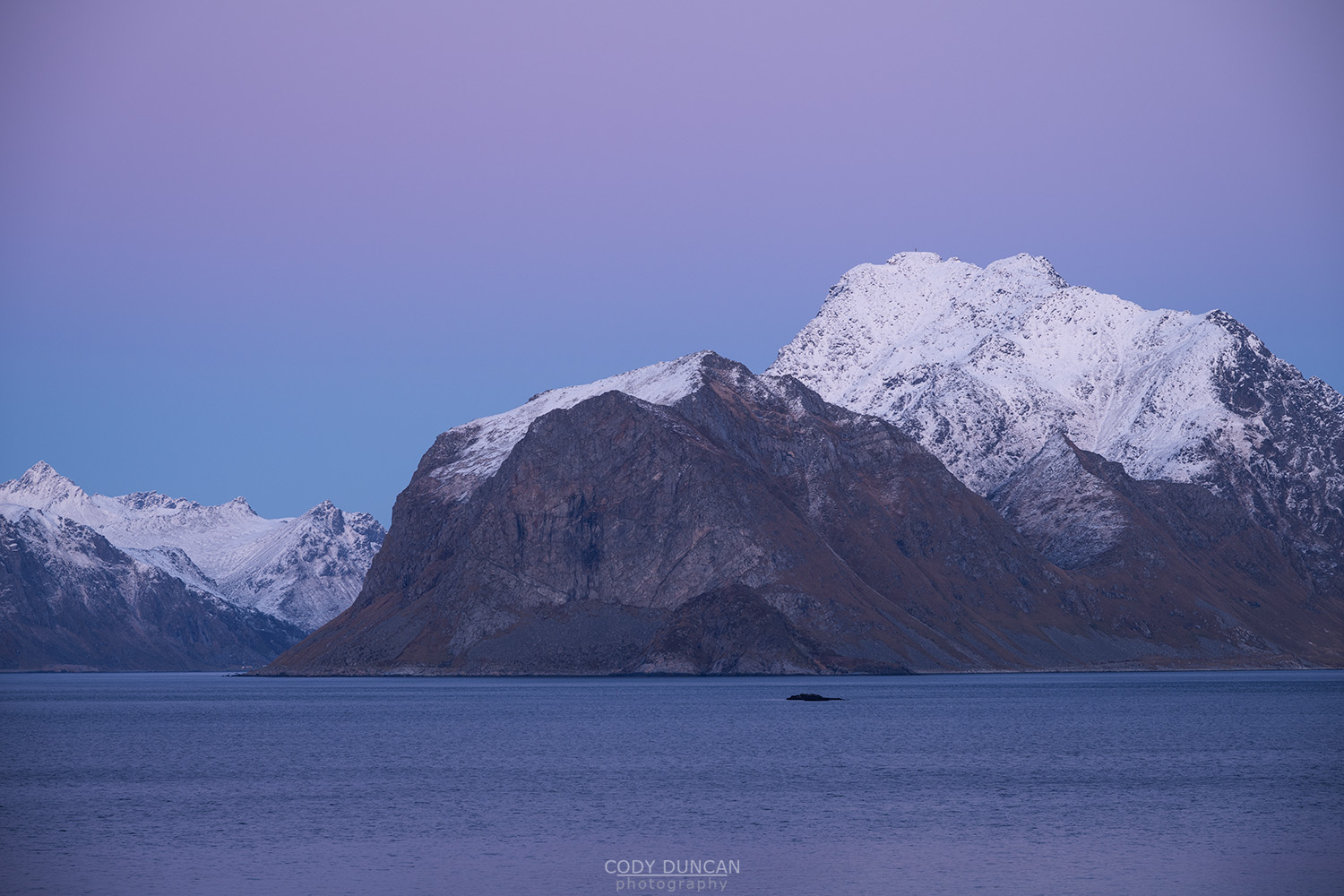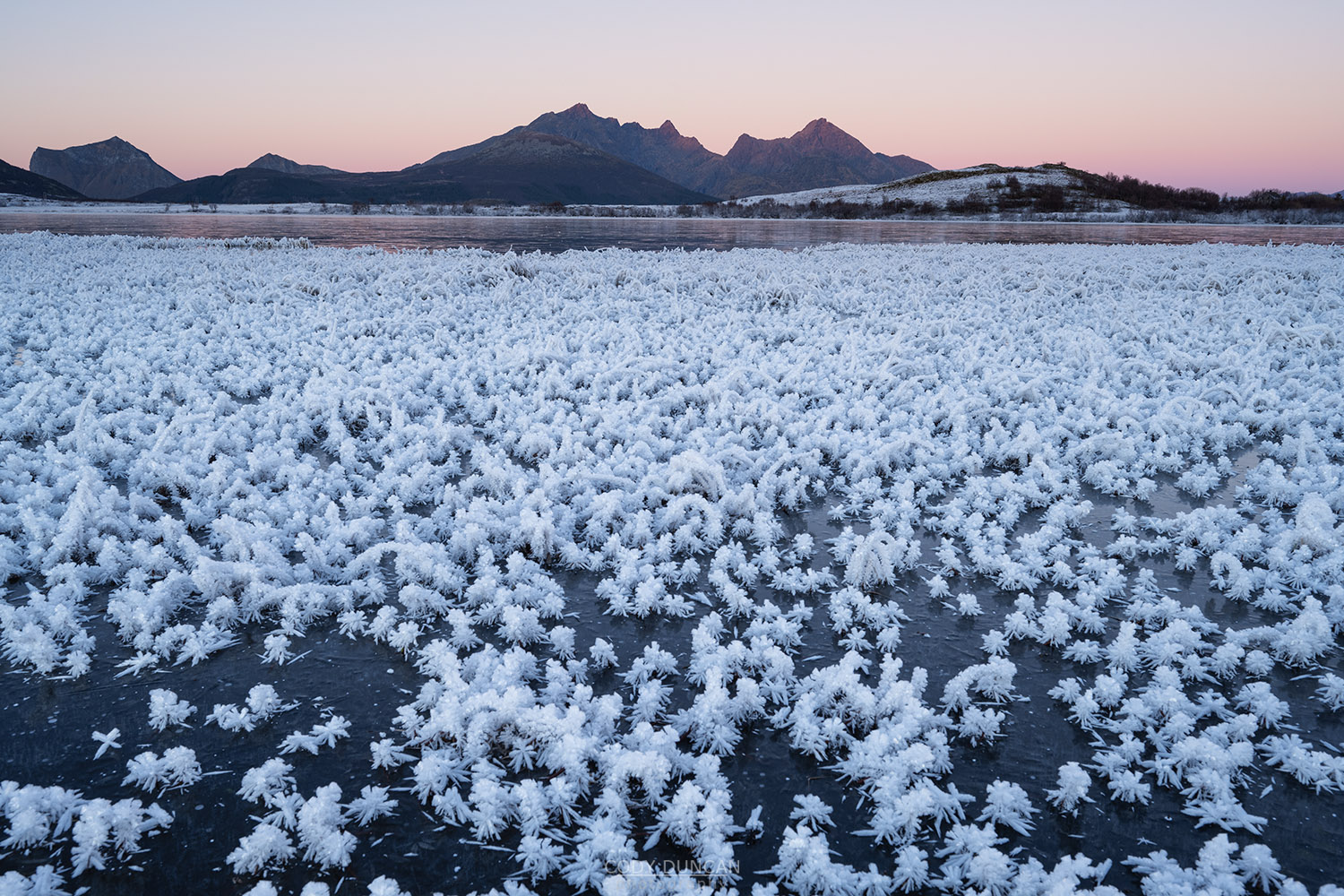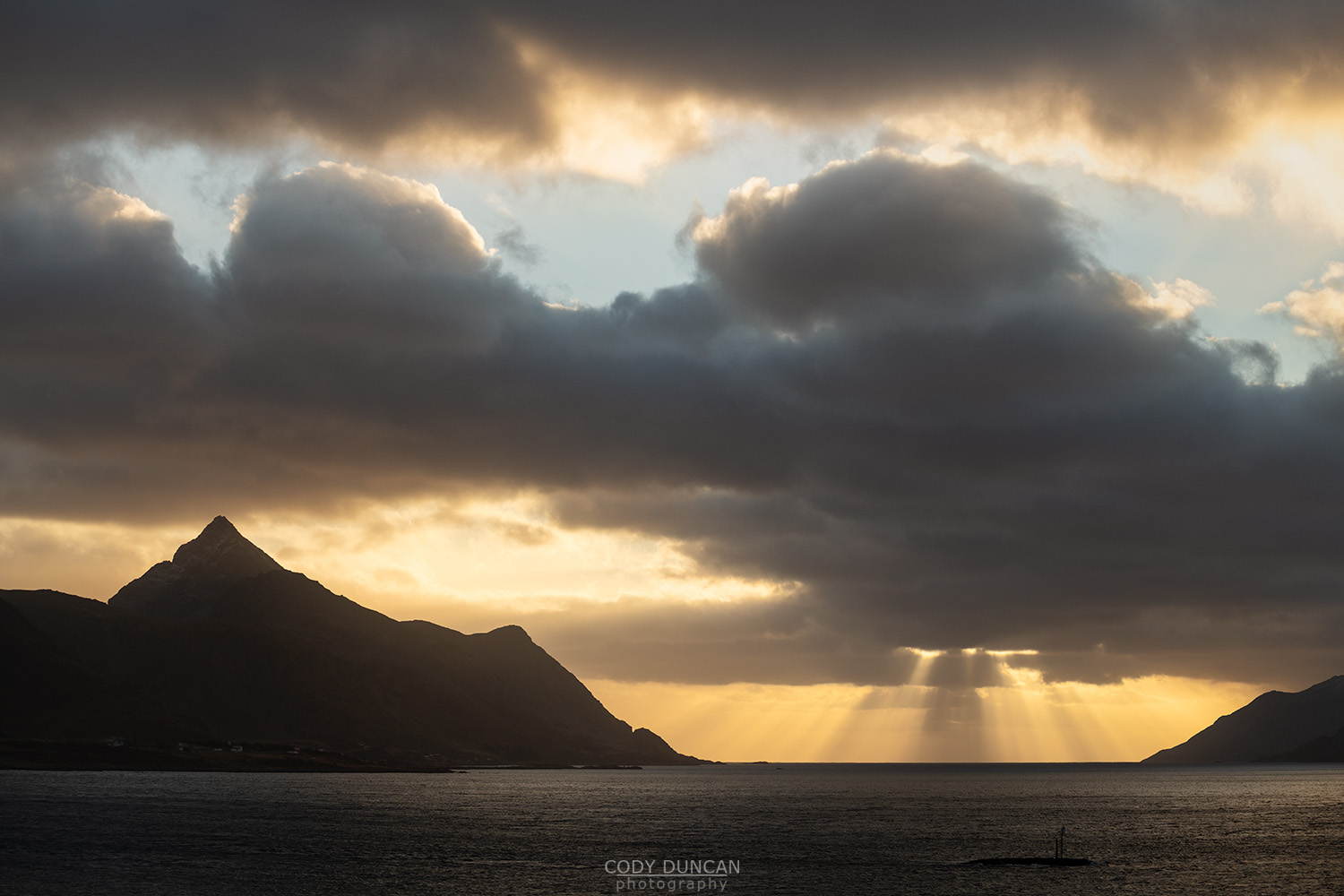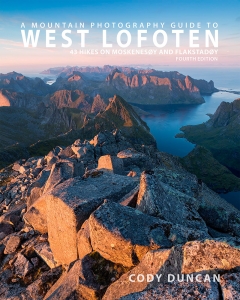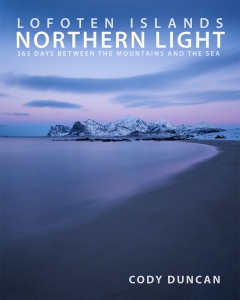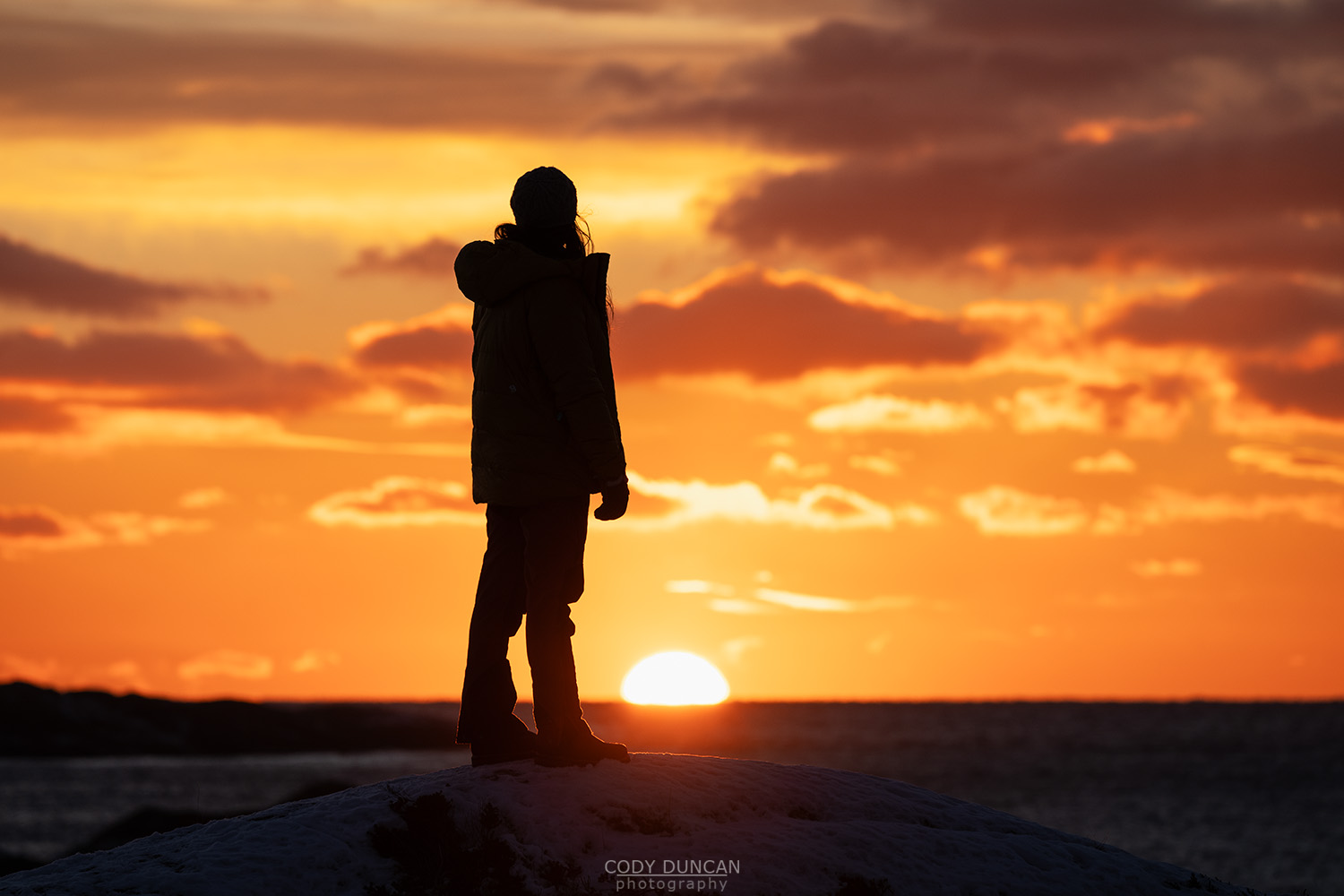
Photo: The sun is back! Low January sun partially over horizon over the Vestfjord, Ballstad, Vestvågøy, Lofoten Islands, Norway. 12:30
After a month below the horizon the sun is now (partially) shining again over Lofoten But… When we will first see the sun again is entirely up to the weather. As you can see here with a lucky perfectly clear horizon on January 5th, thus sun is only halfway over the sea and any small layer of clouds would have blocked it out for hour it was visible.
Last year was the earliest I’ve ever seen my ‘first sunlight’ of the year, which was actually the day before this on January 4th while in Reine – with is also near the southern most latitude of Lofoten, so the sun is visible a little earlier there. But two days in a row of first sunlight is pretty special and rare. Usually it takes a week or so, and my longest ever wait was January 18th.
It was a cold east wind blowing on this day and a sun only halfway across the horizon isn’t defiantly not providing any warmth! Though perhaps you could say the warmth of color in the sky was enjoyed by the eyes. The days will still be short for the next weeks and it is this time of year that you can still feel like you are far north in the arctic, while still enjoying a couple hours of sunlight each day. By February, the days will begin to feel ‘normal’ with the sun higher in the sky, and then already by March I’ll have to set my morning alarm clock to a painfully early time to take my groups out for sunrise.
But I enjoy this time of year of the return of the sun much better than I do the countdown of the sun’s departure in November and early December. I is nicer to know more light is on the way with each passing day, than the opposite – that the polar night is coming.
Head over to my Instagram account for (almost) daily postings of the local conditions here on Lofoten: @distant.north
Camera Info:
Nikon z7 II
Nikon 100-400mm f/4.5-5.6
250mm
ISO 100
f 7.1
1/320 Second
WB Daylight

